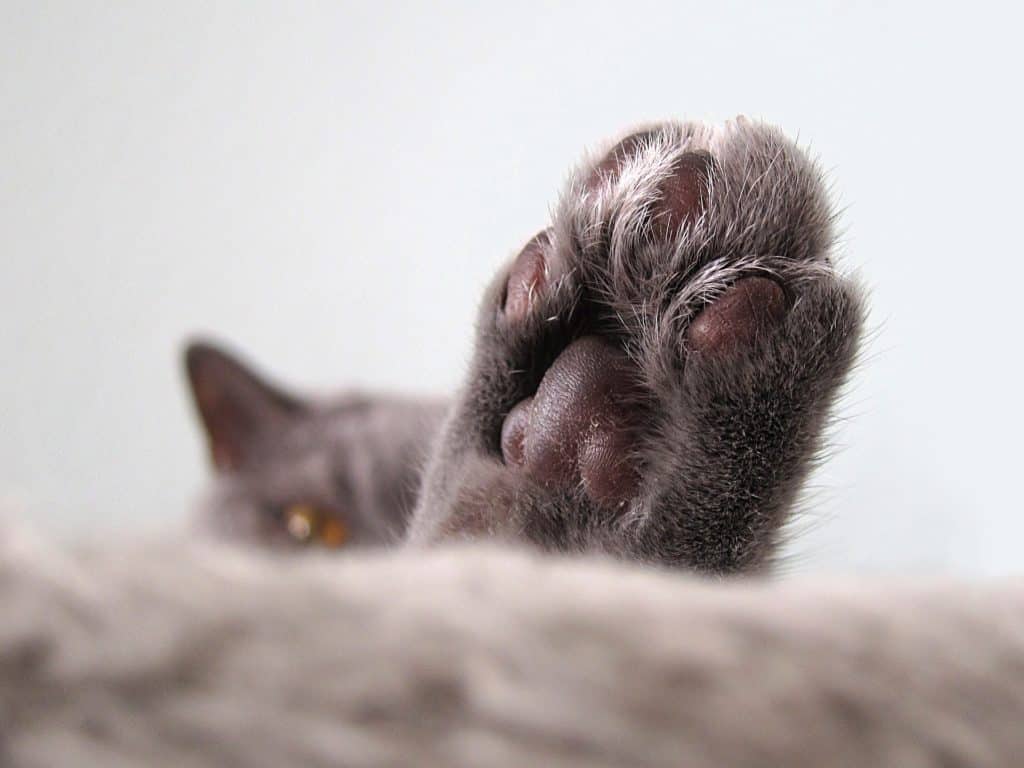Declawing your cat is a common procedure to help prevent household felines from continuously scratching and clawing. This safe and painless procedure can save your home while not providing any issues for your cat.
Why Declawing Services?
An Onychectomy, or declawing, is a process in which a cat’s claws are surgically removed. We often perform this procedure on cats with conditions such as compromised immune systems and bleeding disorders. Also, it is very common among pet owners who suffer from their cat’s scratching behavior.
It is frequently used to control a misbehaving cat and to reduce the risk of injury from a cat’s scratch. After this procedure, children and other pets will be safe from scratches. This will make daily life more comfortable for you, your family, and your house.
Why Choose Care Animal Hospital’s Feline Declawing Services?
Our team is formed of ethical, efficient, and experienced veterinarians who are ready to assist you and your cat at any time. We will work together to ensure that your feline friend receives the best possible care and medical attention. Also, we ensure that our methods are the safest for your cat.
We make certain that your pet is not anxious or stressed. Also, in our clinic, we only provide the best care and assistance. We only use the best, most up-to-date technology. This enables us to provide your cat with the best declaw possible.
Likewise, we are always prepared for unexpected situations. We will do everything possible to ensure your pet’s health and well-being. We will provide you with only the best care.

What to Expect From Our Feline Declawing Services
Regarding our feline declawing services, we only work with one method: blade declawing. With this method, the blade will directly cut through the cat’s nail joints, removing just the nail and no other surrounding tissue. Then, the surgical site will be closed with one drop of surgical glue.
This is the best and most ethical medical technique to declaw your cat. Therefore, it is the only method we provide at Care Animal Hospital. Any other techniques are highly discouraged, after all, they compromise your cat’s health and well-being.
Discouraged Declawing Methods
Below are the methods to declaw cats that we do not condone. Learning about these methods can help you understand that our technique (surgical blade dissection) is one of the best procedures, as it is relatively painless.
It’s important to note that almost all of these procedures include cutting off the very last bone on your cat’s paw, which the claw is attached to. Also, they all affect the cat’s ability to live normally and do activities such as climbing, stretching, and defending itself.
After these procedures, the cat will feel pain and discomfort for weeks, and even months. There could be many complications, such as bleeding, nerve damage, and infections.
Laser Declawing
Although this is a highly advertised method, it has been shown that it produces more scarring than the blade technique. Therefore, it can cause more pain, and it could cause their paws to be less flexible. This can prevent them from doing day-to-day activities such as climbing.
Amputation Declawing
This is the most invasive procedure as it removes surrounding vital pad tissue and bone structure. After this procedure, the cat will have remarkable pain, along with an extended recovery of six weeks or more. This is what makes this method very unfavorable for any cat.
As this method could be considered animal cruelty, we highly discourage it here at Care Animal Hospital.
Are Declawing Services a Necessary Procedure?
This heavily depends on the needs of both you and your cat. After all, some felines may benefit from a declawing procedure due to underlying medical conditions. Some cats, for instance, can seriously hurt themselves with their claws, which can result in multiple infections.
Other cats with compromised immune systems shouldn’t take a chance on self-scratching. After all, this could seriously endanger them. If they expose a wound, they run the risk of contracting numerous illnesses, which would quickly worsen their health.
On the other hand, it is not necessary to declaw a cat due to behavioral issues. Therefore, choosing to declaw a cat should be carefully considered and discussed with one of our veterinarians. Before making this choice, you should consider other options to meet the needs of the cat and the household.
Aftercare
After declawing your cat, I will arrange a follow-up appointment to examine the incisions and monitor the cat’s recovery. You will also receive some instructions from them to follow.
Some of them comprehend giving them medication, keeping an eye on them, preventing them from licking their injuries and restricting their activities.
Frequently Asked Questions
Will Declawing Hurt My Cat?
During the recovery period, your cat will be on pain medication and an anti-inflammatory drug to relieve any pain or discomfort. During the first two weeks at home after surgery, your cat should be confined to a small room with food, water, and a litter box.
You can spend time with them for a visit, but the cat’s activity needs to be reduced.
The idea is to prevent your cat from jumping and running around, which could decrease the ability of your cat’s paws to recover. Your cat will get used to the changes and will be back to normal.
Is It Cruel to Declaw a Cat?
Declawing a cat or agreeing to go through with the procedure, like other procedures that raise ethical concerns for your pet, depends on your and your family’s needs and desires. Declawing properly helps to avoid harmful injuries and unfavorable feelings among family members.
Can Declawing Result in Personality Changes?
For many, there is a concern that feline declawing can lead to personality changes. However, several studies have proven that the correlation does not exist. Behavioral changes from declawing are almost non-existent.
Like most surgeries, be it human or animal, if you choose the right surgeon that uses the right technique with proper aftercare, you will enjoy your special cat friend without concern for human injury or property damage.
